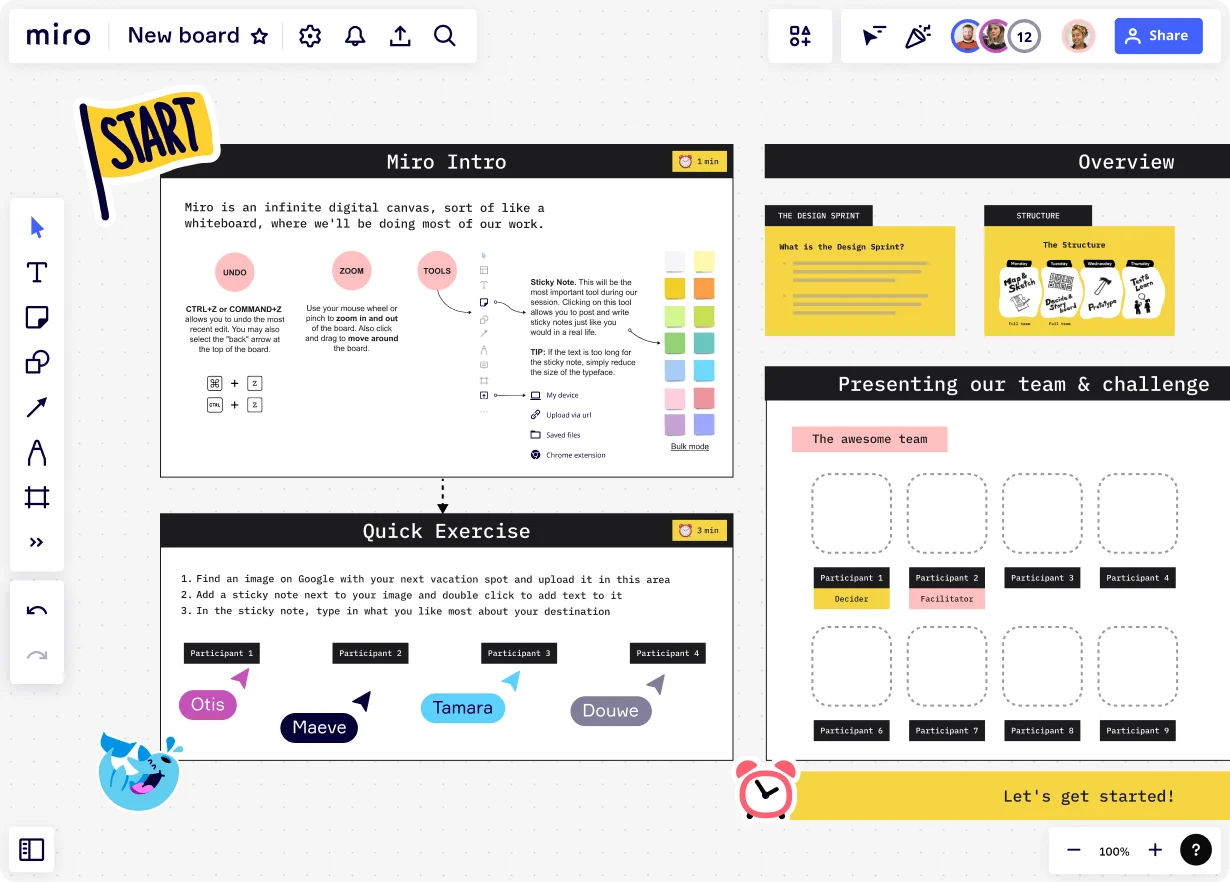
Table of contents
Table of contents
What is iterative design?

Summary
In this guide, you will learn:
- The fundamental principles and benefits of iterative design as a process for improving products
- The four key steps involved in running an iterative design process: identifying problems, prototyping, testing, and analyzing results
- How prototypes function as experimental tools to validate design assumptions
- The role of user testing and feedback loops in refining designs continuously
- Various tools and techniques used to support iterative design, such as sketching and wireframing
- How iterative design differs from traditional linear design approaches by emphasizing ongoing iteration and learning from failures
Try Miro now
Join thousands of teams using Miro to do their best work yet.
The basics of iterative design
The notion of a one-size-fits-all design philosophy seems to be a fallacious relic of a bygone era—an ancient myth that has been debunked by the fluctuating demands of today's sophisticated market. The design landscape has shifted radically, placing irrefutable emphasis on adaptability and perpetual evolution.
This article aims to demystify the complex paradigm of iterative design. It will explain its underlying philosophy, illustrate its diverse advantages, examine its cyclical process, and offer practical tips for effective implementation.
The traditional approach to design
The traditional design method often starts as a germinating idea—an initial concept that is cultivated, nurtured, and finally executed. Although not without its merits, this rudimentary approach remains relatively rigid, offering scant room for modifications. Many regard the initial blueprint as holy—a "master plan" from which deviation is considered heresy. Yet, the complexity of current user needs and market forces can render these fixed designs obsolete even before their full implementation.
Why traditional methods aren't enough
The warp and weft of today's design requisites are incessantly altered by technological changes, fluctuating user needs, and an ever-competitive market. Traditional design methodologies, with their rigidity, are often inadequate to navigate these turbulent waters.
The pitfall of assumptions
Operational traps often arise from unverified assumptions. A designer's speculative preconceptions can give birth to design elements that may prove detrimental in the long run.
The philosophy behind iterative design
Let's take a closer look at the philosophy behind iterative design:
The power of incremental progress
The core of iterative design lies in incrementalism—a direct commitment to minor, iterative improvements. The sum of these granular advancements contributes to a transformative user experience.
Why mistakes are your best teachers
The iterative approach values failure as an instructive tool. The rapidity with which shortcomings are identified allows for accelerated learning and improvement.
How to run an iterative design process — 4 key steps
If you're looking to set up an iterative design process, follow the steps below:
Identify the problem or opportunity
The first step entails a lucid understanding of the challenge or opportunity, achieved through meticulous data gathering and analysis.
Prototype
Prototypes serve as tangible hypotheses—experimental apparatus that undergo rigorous testing to validate or invalidate underlying assumptions.
Test
The crucible of real-world application illuminates latent design flaws, providing invaluable data for subsequent iterations.
Analyze what worked, what didn't, and why
The iterative process culminates in a retrospective analysis—a diagnostic audit to identify successes and shortcomings.
Tools and techniques
Some core tools and techniques include:
Sketching and wireframing
These incipient steps serve as the structure for the more complex design layers.
User testing
User testing is the crucible wherein a design's mettle is truly tested. Without comprehensive user feedback, the design remains an untested hypothesis.
Feedback loops
Feedback loops constitute the vascular system of iterative design, nourishing it with fresh insights and purging it of stale ideas.
Advantages of iterative design
Here are some of the main benefits of iterative design:
How iterative design keeps you balanced
This approach equips designers with the agility to adapt to change—a trait indispensable in today's erratic business climate. Iterative design enables the creation of bespoke solutions that resonate with specific user needs, thereby elevating user satisfaction.
Reduced rework
The iterative model significantly slashes the budget allocated for rework, making it a fiscally prudent choice. With its data-backed iterations, this approach promises not just cost savings but also robust returns on investment.
Challenges and how to overcome them
At the same time, there are a few key challenges to keep in mind.
Analysis paralysis
The overwhelming influx of data can result in stagnation—a phenomenon known as analysis paralysis. This can be mitigated through focused data interpretation.
Perfectionism vs. progress
The quest for perfection can often hinder progress. Striking a harmonious balance is crucial for sustained growth.
Setting milestones
Quantifiable milestones serve as litmus tests for the ongoing project, offering tangible markers of progress or stagnation.
Cross-functional teams
The amalgamation of diverse skills within a cross-functional team fosters a more holistic approach, negating the myopia of specialization.
Future of iterative design
Emerging technologies like AI and automation are poised to be game-changers, imbuing the iterative process with unprecedented efficiency. As we tread into the future, it's vital to consider the ethical ramifications of accelerated design cycles, ensuring that innovation does not come at the expense of responsibility.
Why iterative design is here to stay
Iterative design is not merely a trend du jour but a foundational shift in how we conceptualize and execute design—a change that promises to endure.
It's time to eschew outmoded design dogmas and embrace this dynamic approach. Whether you're a rookie designer or a seasoned professional, the iterative methodology offers a wealth of benefits ripe for the picking.
Recommended books
- "The Design of Everyday Things" by Don Norman
- "Lean UX" by Jeff Gothelf
Author: Miro Team
Last update: October 22, 2025